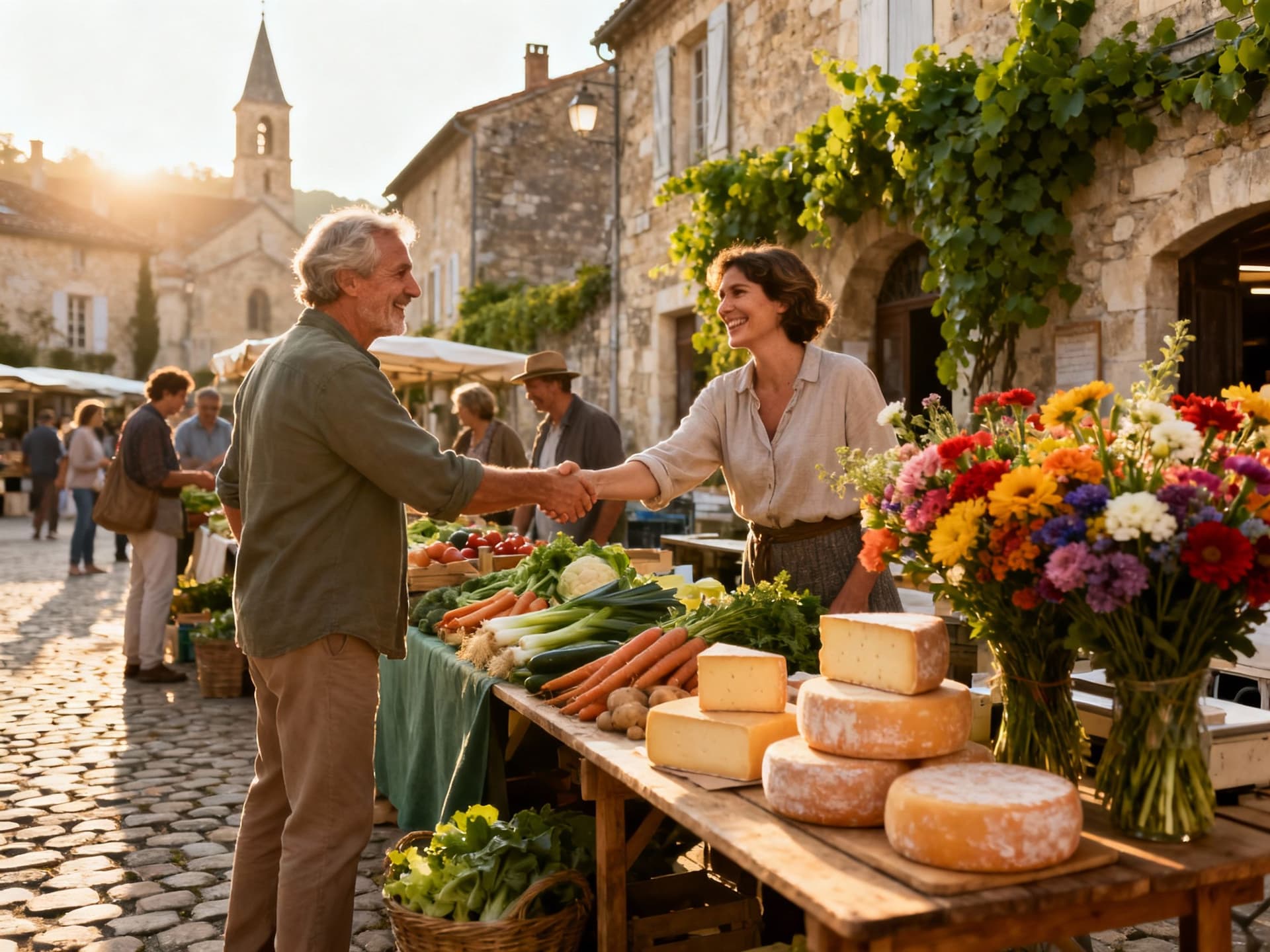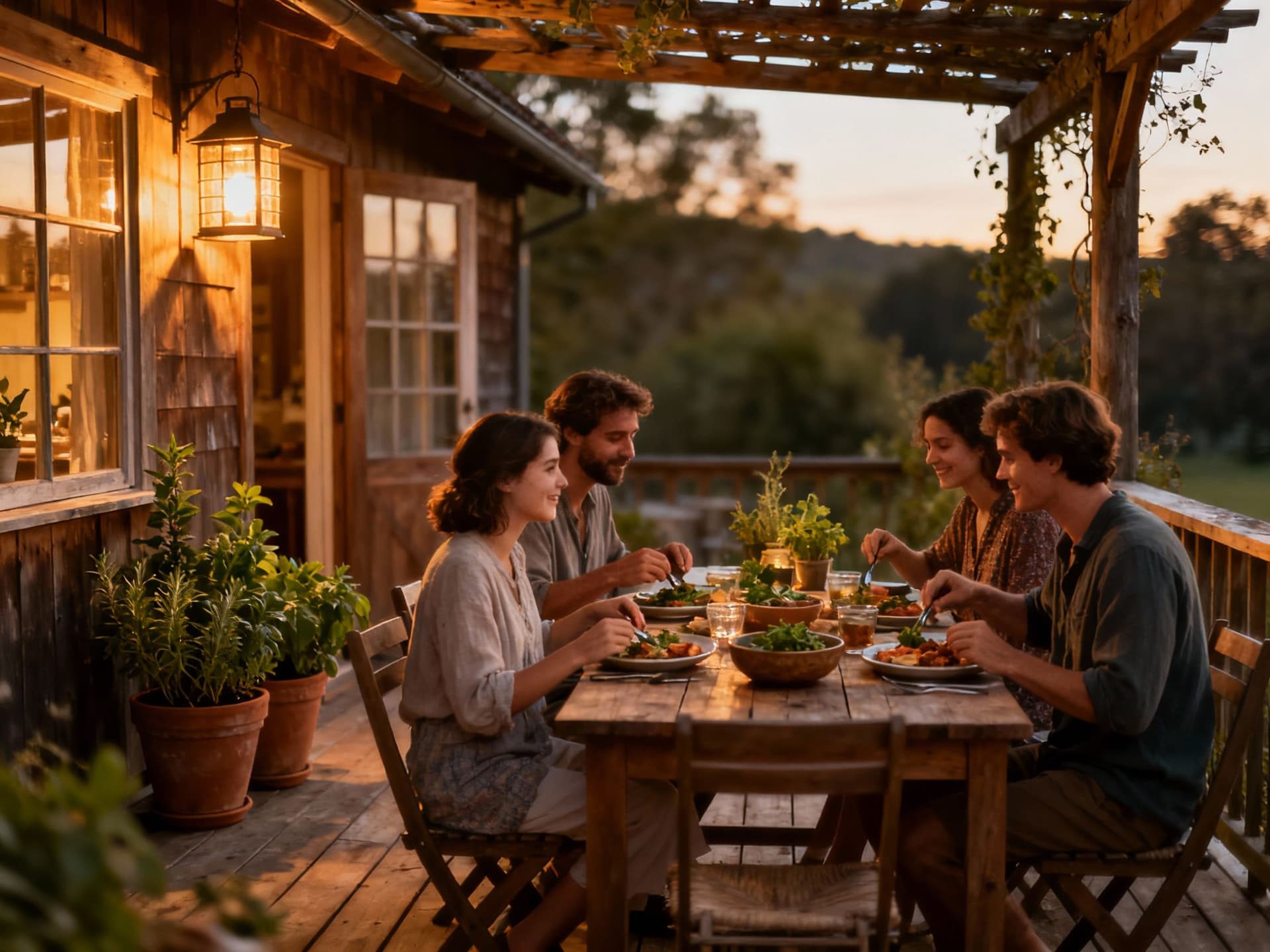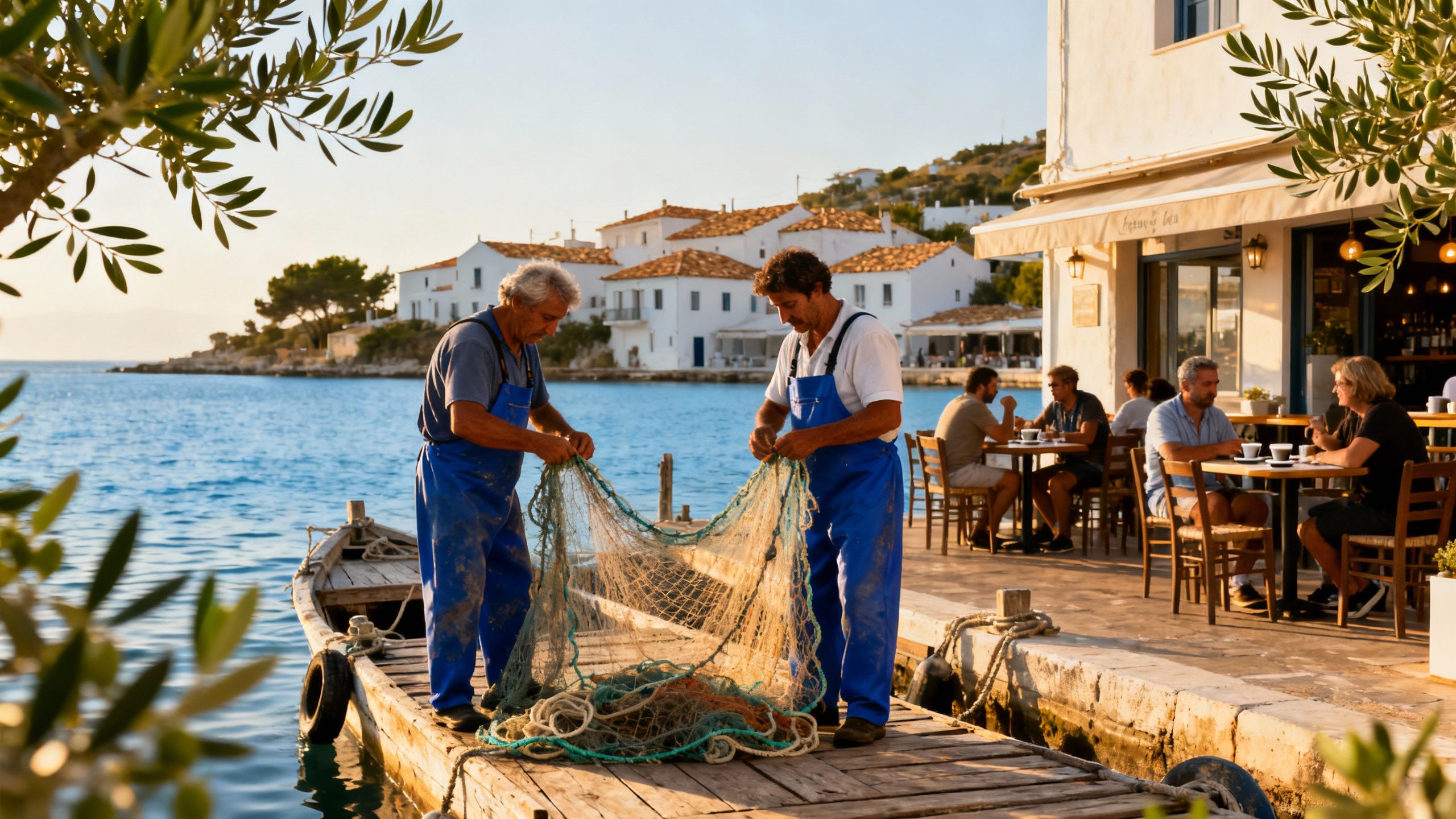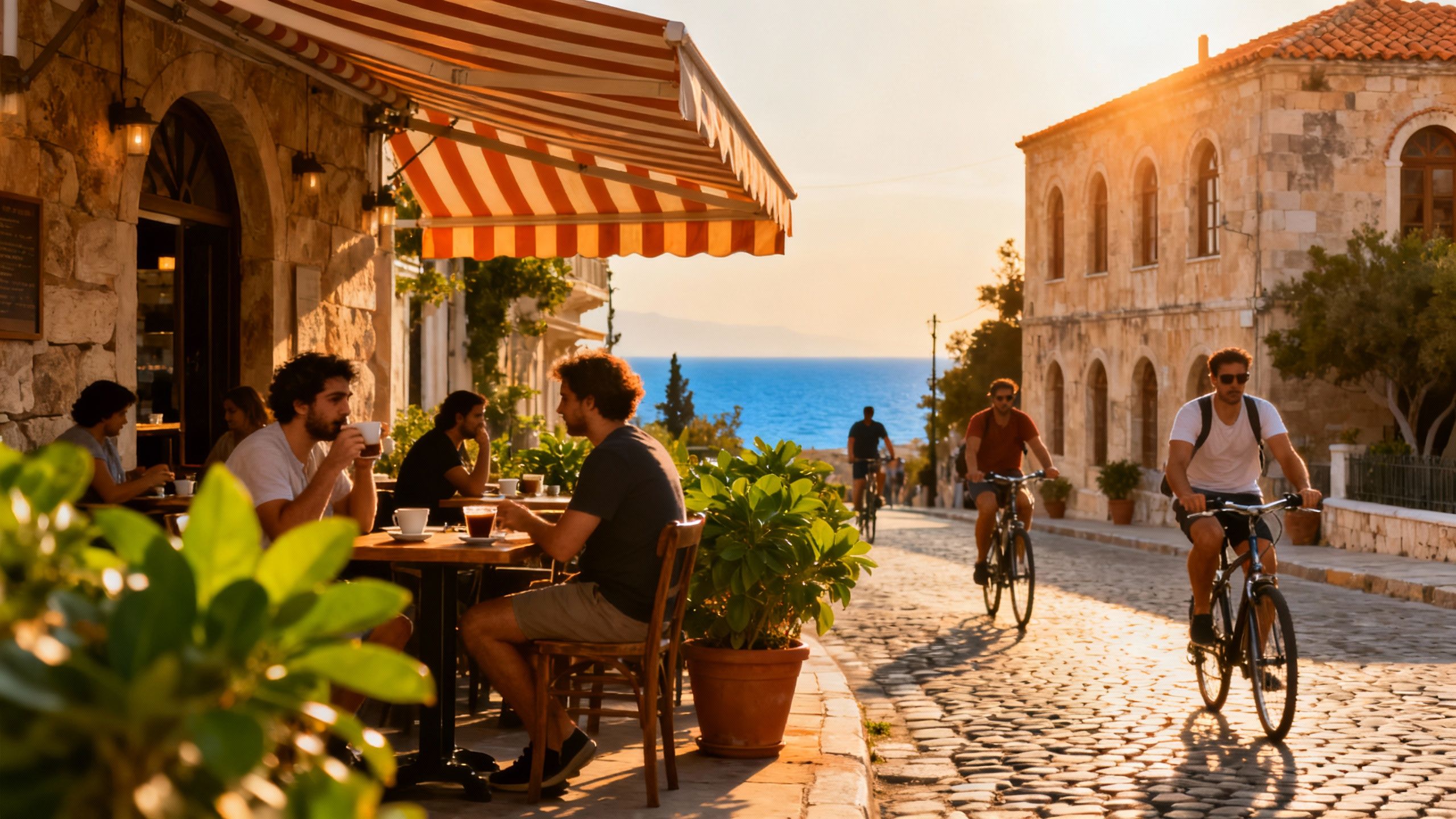Seasonal Stewardship: Living and Buying in France
Fall in love with France’s seasonal rhythms and regional crafts, then match that feeling with precise checks on taxes, notary fees, and local planning.
Imagine waking to the smell of freshly baked viennoiseries, wandering a Saturday marché between stone buildings, then returning to a timber-framed house whose garden hums with bees. In France, everyday life is threaded with small seasonal rituals — from the morning espresso at a local café to late-summer markets full of heirloom tomatoes — and those rhythms shape where and how people buy homes. For international buyers who prize sustainable living, France offers decades-old building craft, regional materials, and landscapes that reward low-impact stewardship. Yet the dream must be matched with practical clarity: taxes, local rules, and market trends that differ across Paris, Provence, and mountain valleys.
Living the French life: atmosphere and daily rhythms

Mornings in French towns begin with a rhythm that feels local and slow: boulangeries queueing, markets arranging produce by colour, and small squares filling with conversation. Coastal villages on the Côte d’Azur trade salt air and evening light for café terraces and seafood; inland villages, from Dordogne to Loire, offer quiet lanes, stone houses, and a culture of seasonal food and foraging. Urban neighbourhoods, whether Paris’ Marais or Lyon’s Croix-Rousse, combine intimate cafes with cultural institutions and neighbourhood bakeries run by families for generations. These textures of daily life guide practical choices — proximity to markets, south-facing terraces for winter sun, and homes with garden space for seasonal food-growing.
Spotlight: village and seaside living
Picture Cassis mornings on the small port, or evenings in Saint-Jean-de-Luz where surf and Basque culture meet. Village life favours long lunches, community fêtes, and neighbours who trade garden produce; seaside towns add seasonal tourism rhythms and tighter planning rules for short‑let rentals. For buyers seeking calm and biodiversity, look for properties with established gardens, native hedgerows, and water management features — these support pollinators and reduce maintenance while fitting local planning preferences.
Food, markets and seasonal living
France’s market is regional and seasonal: inland hamlets offer lower prices but slower services, while coastal and Alpine areas command premiums. Recent INSEE data show a modest recovery in second‑hand prices in early 2025, reflecting renewed activity after multi‑quarter softening. For lifestyle buyers this matters: a smaller purchase budget can buy a longer garden and more privacy in rural departments, while coastal homes often mean tourism-linked regulations and higher maintenance during busy months.
Lifestyle highlights worth seeking
Morning markets: Marché Forville (Cannes), Marché d’Aligre (Paris)
Neighbourhood cafés: Rue Cler (Paris), Vieux-Lyon bouchons
Nature textures: garrigue and olive groves in Provence; chestnut forests in Corsica
Making the move: practical considerations

The romance of place collides with paperwork: in France, buying property involves notary fees, checks for planning constraints, and tax rules that vary by residency. Non‑residents pay tax on French‑source income and must declare property holdings; the official tax administration pages outline what to expect for rental income, local taxes, and wealth‑linked obligations. Understanding local rules early prevents surprises — for example, additional taxes or registration requirements for short‑term lets in major tourist towns.
Property styles and how they shape everyday life
Farmhouses and stone maisons in rural France offer thick walls, timber beams, and gardens suited to seasonal living; their thermal mass can be a boon for passive cooling but often needs updated insulation or efficient heating. Townhouses and apartments in historic centres provide walkable daily life, cafés below and narrow streets, and frequently stricter renovation rules. New eco‑builds and renovated barns increasingly include solar panels, heat pumps, and rainwater reuse — features that align with regional incentives and reduce long‑term running costs.
Working with local experts who understand place
A local agency that knows seasonal life, building norms, and regional ecology is indispensable. Good agents will advise on permitted renovations (especially in protected zones), local contractor networks skilled in stone or lime‑based renders, and the microclimates that affect garden choices. For international buyers, bilingual notaries or lawyers familiar with non‑resident tax matters can translate both language and legal nuance, helping you plan for occupancy, rentals, or long‑term stewardship.
Steps to align lifestyle with property choices
Define your seasonal priorities: year‑round living needs different insulation, heating, and services than a summer retreat.
Check local planning: confirm renovation permissions, conservation area limits, and short‑let registration rules before making an offer.
Budget for hidden costs: notary fees, diagnostic reports (DPE, parasites, lead), and necessary upgrades for energy performance.
Engage tax and residency advisors early: understand income tax, social contributions on rental income, and IFI thresholds if your French property holdings exceed limits.
Insider knowledge: what expats wish they'd known
Expats often discover that small practical choices transform daily life: a south‑facing window matters more than extra square metres in colder regions, and a reliable local boulangerie becomes a social anchor. Recent statistics suggest modest price recovery in 2025 after earlier declines, which means timing and region matter for value. Many who regret a rushed purchase point to skipping local inspections or underestimating maintenance on older stone roofs — a reminder that romantic appeal should be reconciled with professional due diligence.
Cultural integration and community life
Learning everyday French, attending local fêtes, and buying at markets are the fastest routes to belonging. Many communities welcome newcomers through associative life — gardening clubs, village councils, and local markets — where shared stewardship of land and vernacular building skills are passed on. Respect for seasonal cycles — summer closures, slow services in January — helps set expectations for newcomers and reveals the softer tempo of French life.
Long‑term stewardship: making a home part of the landscape
Think of ownership as stewardship: plant native hedges, prioritise permeable surfaces, and consider renewable systems that suit the region — heat pumps in temperate areas, solar in sunnier south. Legally, non‑residents must declare property and income, and may be liable for specific charges; the French tax authority provides clear guidance on obligations and filing. Aligning ecological upgrades with available incentives can lower long‑term costs and deepen ties with local tradespeople who value traditional materials.
Buyer's checklist for lifestyle-driven purchases
Visit across seasons to feel winter light, summer tourism and autumn quiet.
Order full diagnostics (DPE energy, lead, termites) and a survey for older properties.
Clarify short‑let rules if you plan occasional rentals in tourist zones.
Plan for garden ecology: native plantings, water capture, and pollinator habitats.
If you dream of France’s seasonal table, restorative landscapes, and neighbourhood cafés, start by visiting the life you want to live. Walk streets at dawn, speak with bakers and neighbours, and ask about local contractors who repair stonework with lime and insulate sympathetically. Then match that lived experience with professional advice on tax, notary processes, and energy upgrades — the combination of sensory love for a place and careful due diligence turns a foreign house into a resilient home.
Swedish advisor who left Stockholm for the Costa Brava in 2019. Specializes in sustainable, sea‑view homes for Scandinavian buyers and green finance insights.


